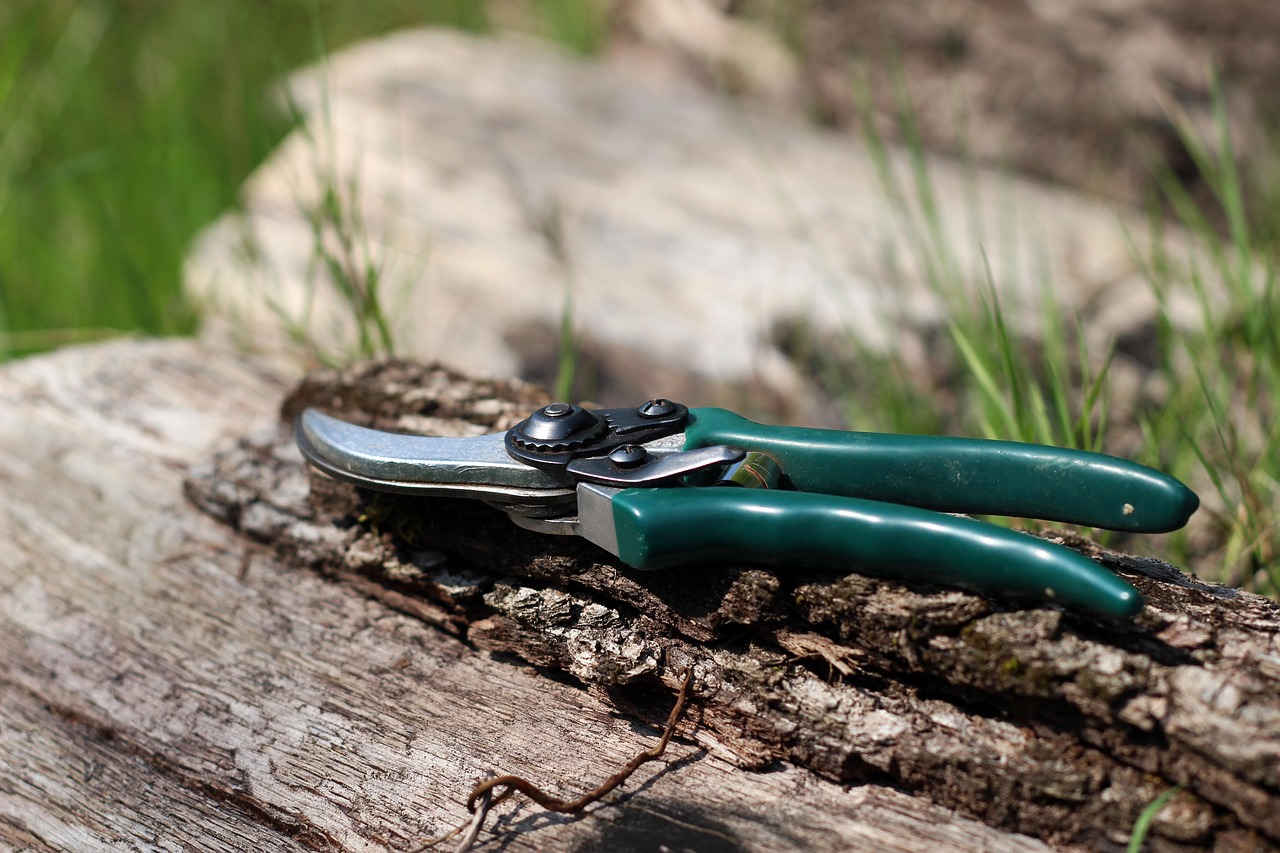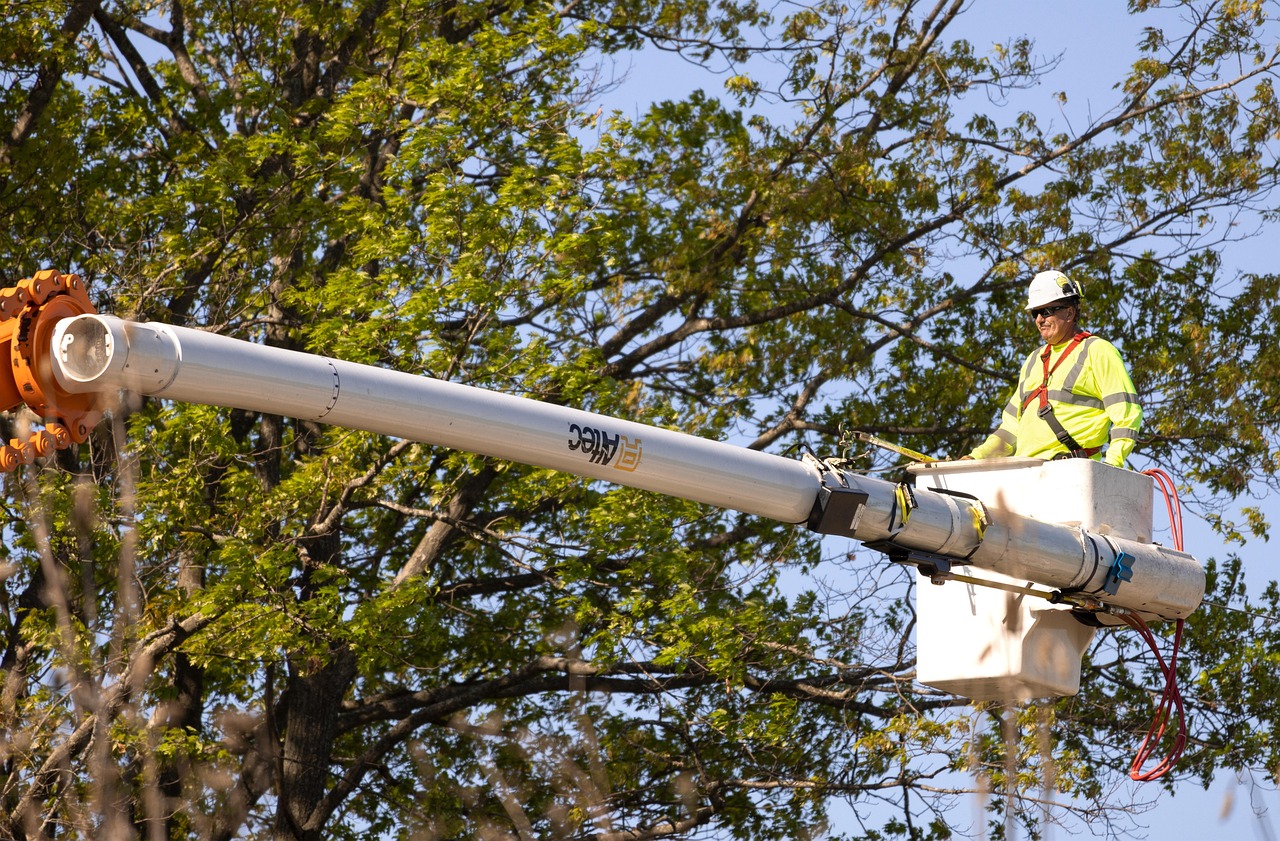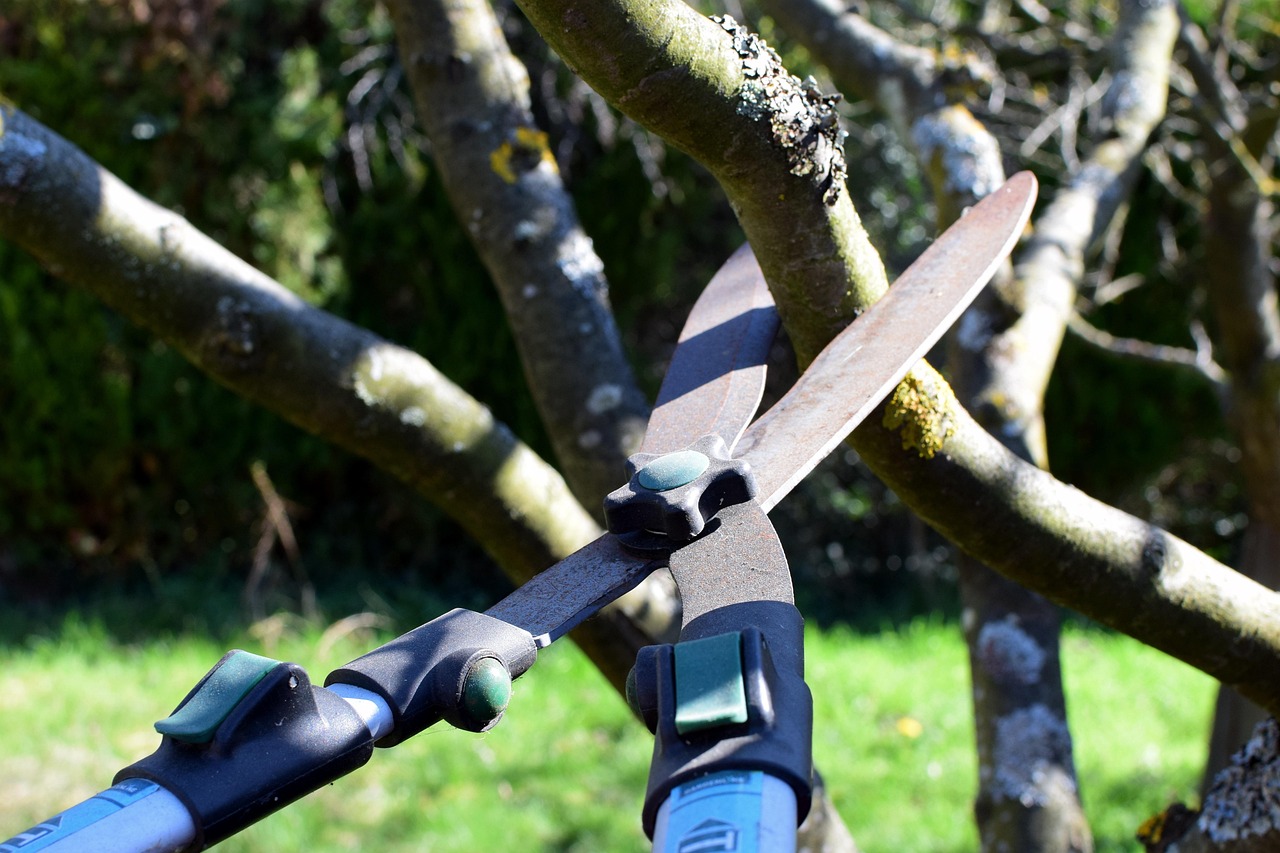Properly pruning old and mature trees is vital for their health, safety, and longevity. This guide highlights key techniques, tools, seasonal timing, and expert advice to ensure effective care. Regular, specialized pruning prevents disease, structural issues, and supports the overall ecosystem, ensuring these valuable trees thrive for years to come.
Old and mature trees are vital components of our landscapes and ecosystems. They provide shade, improve air quality, and support biodiversity. However, as trees age, they often require specialized care to maintain their health and structure. Pruning is one of the most effective methods for achieving this. This practice not only enhances the tree’s appearance but also helps prevent disease and encourages new growth.

Pruning old and mature trees differs significantly from pruning younger trees. While younger trees may benefit from corrective pruning to shape their growth, mature trees often require more nuanced techniques. Specialized pruning can help manage the weight of heavy branches, remove dead or diseased wood, and improve air circulation within the canopy.
Understanding the Need for Specialized Pruning
As trees mature, their growth patterns change. They may develop structural weaknesses, such as large, heavy branches that can threaten their stability. Additionally, old trees may have a higher susceptibility to diseases and pests due to their age. Specialized pruning addresses these issues by focusing on the specific needs of older trees. Here are some reasons why specialized pruning is essential:
- Health Improvement: Removing dead or diseased branches can help prevent the spread of pathogens and promote overall tree health.
- Structural Support: Pruning can reduce the risk of branch failure by alleviating weight on heavy limbs.
- Enhancing Aesthetics: A well-pruned tree looks better and can increase property value.
- Encouraging New Growth: Strategic cuts can stimulate new growth, allowing the tree to thrive.
In addition to these benefits, proper pruning techniques can also extend the life of old trees. It is crucial to understand the biology of the tree species being pruned. Different species may respond differently to pruning methods, which is why specialized knowledge is essential when working with older specimens.

Key Techniques for Pruning Old and Mature Trees
Several techniques are particularly effective for pruning old and mature trees. Each technique serves a distinct purpose and should be applied with care. Understanding these techniques can help ensure that the pruning process is beneficial rather than harmful.
- Crown Thinning: This technique involves selectively removing branches throughout the tree’s canopy. The goal is to improve light penetration and air circulation. This can reduce the risk of disease and promote healthier growth.
- Crown Raising: This method focuses on removing lower branches to increase clearance above the ground. Crown raising is particularly useful for enhancing accessibility and visibility in landscapes.
- Crown Reduction: This technique reduces the overall size of the tree’s crown without changing its natural shape. It is beneficial for managing the height of large trees that may pose risks to structures or power lines.
- Deadwooding: Removing dead or dying branches helps prevent decay from spreading to healthy parts of the tree. It also improves safety by reducing the risk of falling branches.
Each of these techniques requires a different approach and should be executed with precision. For instance, crown thinning should be performed gradually, ensuring that no more than 25% of the foliage is removed in a single session. This minimizes stress on the tree while maximizing the benefits of pruning.
Tools Required for Specialized Pruning
The right tools are essential for effective pruning. Using improper tools can harm both the tree and the person performing the task. Here are some common tools used in specialized pruning:

| Tool | Description |
|---|---|
| Hand Pruners | Ideal for small branches up to ¾ inch thick. |
| Loppers | Used for larger branches up to 2 inches thick; provides better leverage. |
| Saws | For cutting larger limbs; includes hand saws and pole saws. |
| Chainsaw | A powerful tool for large limbs and trunks, requiring safety precautions. |
| Safety Gear | Includes gloves, goggles, and helmets to protect against injuries. |
Selecting the proper tools not only ensures effective pruning but also promotes safety during the process. It is essential to keep tools sharp and well-maintained for optimal performance. Proper training in using these tools is equally important to avoid accidents and ensure successful outcomes during pruning tasks.
Understanding Tree Biology for Effective Pruning
To perform specialized pruning effectively, it is crucial to understand the biology of trees. Each species has its unique growth patterns, which influence how and when pruning should be done. Knowledge of tree anatomy, such as the structure of branches, leaves, and roots, can significantly affect the outcome of pruning efforts.
The main components of a tree include:

- Roots: Anchor the tree and absorb water and nutrients from the soil.
- Trunk: Supports the tree and transports nutrients and water between the roots and leaves.
- Branches: Extend from the trunk to form the canopy, providing support for leaves and flowers.
- Leaves: Facilitate photosynthesis, converting sunlight into energy for the tree.
- Bark: Protects the tree’s internal tissues from damage and disease.
Understanding these components helps in identifying which parts of the tree can be pruned without causing harm. Moreover, different trees respond to pruning at various times of the year. For instance, some trees benefit from pruning in late winter or early spring when they are still dormant. Others may require pruning in late summer or early fall after their growth has slowed down.
Signs That Old Trees Need Pruning
Identifying when an old tree requires pruning is essential for maintaining its health and safety. Here are some signs to watch for:
- Dead or Dying Branches: Any branch that appears dry or has lost its leaves may need to be removed.
- Crown Density: If the canopy is too dense, it may restrict light and air circulation, indicating a need for thinning.
- Structural Issues: Look for branches that are crossing or rubbing against one another, which can cause damage over time.
- Pest Infestation: Signs of pests, such as holes in the bark or frass (insect excrement), may warrant pruning to prevent further damage.
- Mushroom Growth: The presence of fungi at the base or around branches can indicate decay within the tree.
Regular inspections are crucial, especially for older trees. Observing these signs early can help prevent more significant problems down the line, such as structural failure or disease spread.
Seasonal Considerations for Pruning
The timing of pruning is critical to its success. Different seasons affect how trees respond to pruning. Understanding these seasonal effects can lead to better outcomes.
Spring Pruning
Spring is often considered an ideal time for pruning many deciduous trees. However, it is important to wait until after the last frost to avoid damaging new growth. Benefits of spring pruning include:
- Improved Air Circulation: Thinning out branches in spring can allow more sunlight to reach the interior of the tree.
- Encouraging New Growth: Removing old wood stimulates new shoots, enhancing overall vitality.
Summer Pruning
Summer pruning can be beneficial for specific species and is often used to manage tree size and shape. This approach focuses on:
- Controlling Growth: Pruning during active growth can help maintain a desired shape without excessive regrowth.
- Removing Suckers: This is an effective time to remove unwanted shoots that may emerge from the base or along branches.
Fall Pruning
Fall is generally not recommended for most trees due to the stress it can impose before winter dormancy. However, if necessary, focus on:
- Removing Dead Wood: This prevents potential hazards during winter storms.
- Avoiding Major Cuts: Limit significant pruning to avoid stressing the tree before dormancy.
Winter Pruning
Winter is often regarded as an excellent time for pruning many trees while they are dormant. This timing minimizes stress and allows for better healing. Benefits include:
- Easier Visibility: With no leaves, it is easier to assess the tree’s structure and identify which branches to prune.
- Reduced Risk of Disease: Many pests and diseases are less active during cold months, reducing infection risk.
The Importance of Proper Pruning Techniques
The methods used in pruning play a vital role in determining whether a tree will thrive or suffer after the process. Applying correct techniques ensures that cuts are clean and minimize damage to the tree.
- Avoid Topping: Topping is the indiscriminate cutting of branches. It often leads to weak growth and increased likelihood of disease.
- Make Clean Cuts: Always use sharp tools to make clean cuts, which reduces the risk of tearing bark and damaging tissues.
- Prune at the Right Angle: Cuts should be made at a slight angle away from the bud or branch collar to encourage quick healing.
- Avoid Leaving Stubs: Leaving stubs can invite pests and diseases. Cut just above a healthy bud or branch.
By following these techniques, individuals can ensure that their pruning efforts yield positive results while supporting the long-term health of old and mature trees.
Assessing Tree Health Before Pruning
Before undertaking specialized pruning, it is essential to assess the overall health of the tree. A thorough evaluation helps determine the appropriate actions required to promote the tree’s welfare. Here are key factors to consider when assessing tree health:
- Foliage Condition: Check for color, size, and density of leaves. Healthy leaves should be vibrant and plentiful. Yellowing or sparse foliage may indicate stress or disease.
- Branch Integrity: Inspect branches for signs of decay, cracking, or splitting. Healthy branches should feel firm and have a solid structure.
- Trunk Stability: Look for signs of damage or rot in the trunk. A healthy trunk should have smooth bark without large cracks or fungal growth.
- Root Health: If possible, inspect the root zone for signs of decay or pest activity. Healthy roots are vital for nutrient absorption and overall tree stability.
If any of these assessments reveal potential issues, consult with an arborist before proceeding with pruning. An expert can provide insight into whether pruning is suitable or if additional measures are necessary.
Common Diseases Affecting Old Trees
Old trees are often more susceptible to various diseases due to their age and reduced vigor. Understanding these diseases can help inform pruning decisions. Here are some common diseases that affect mature trees:
- Powdery Mildew: This fungal disease appears as a white powdery substance on leaves and stems. It can hinder photosynthesis and weaken the tree.
- Root Rot: Caused by various fungi, root rot leads to decay in the root system. Symptoms include wilting leaves and poor growth.
- Canker Diseases: These are localized infections that create dead areas on branches or trunks. Cankers can weaken the tree and lead to branch dieback.
- Leaf Spot: Leaf spot diseases manifest as dark spots on leaves, which can lead to defoliation if not managed.
Regular monitoring for these diseases can help catch problems early. If any signs are observed, it is important to address them promptly to minimize the risk of further damage.
Pruning Techniques for Specific Tree Types
Different tree species may require tailored pruning techniques to achieve optimal results. Here are some common types of trees and recommended pruning methods:
Deciduous Trees
Deciduous trees lose their leaves in winter, making them suitable candidates for winter pruning. Recommended techniques include:
- Crown Thinning: This technique helps improve light penetration and air circulation.
- Crown Raising: Removing lower branches allows for better access and enhances the tree’s overall appearance.
Coniferous Trees
Coniferous trees retain their needles year-round, requiring different approaches. Key techniques include:
- Pinhole Pruning: This method involves removing small, weak branches to enhance airflow within the canopy.
- Selective Pruning: Focus on removing branches that obstruct growth or pose safety hazards, ensuring to maintain the tree’s natural shape.
Flowering Trees
Flowering trees benefit from pruning to encourage healthy blooms. Recommended practices include:
- Deadheading: Removing spent flowers promotes new growth and enhances flowering in the next season.
- Crown Reduction: This technique can help manage height while encouraging more blooms at lower levels.
The Role of Mulching in Tree Care
Mulching is an often-overlooked aspect of tree care that complements pruning efforts. Proper mulching can significantly enhance tree health by providing several benefits:
- Moisture Retention: Mulch helps retain soil moisture, reducing the need for frequent watering.
- Weed Suppression: A layer of mulch can prevent weed growth that competes with trees for nutrients and water.
- Soil Temperature Regulation: Mulch acts as insulation, helping to maintain consistent soil temperatures.
- Nutrient Addition: Organic mulch decomposes over time, enriching the soil with nutrients beneficial for tree growth.
When applying mulch, ensure it does not touch the trunk of the tree. Instead, create a ring of mulch around the base, extending out to the drip line. A depth of 2-4 inches is usually sufficient to achieve the desired benefits without suffocating the roots.
The Importance of Hiring a Professional Arborist
While some homeowners may attempt DIY pruning, hiring a professional arborist can ensure that specialized pruning is performed correctly and safely. Arborists possess advanced knowledge and training in tree care, including disease recognition and proper pruning techniques.
Here are some reasons to consider hiring an arborist:
- Expertise: Arborists understand tree biology and can identify specific needs based on species and condition.
- Safety: Professionals are trained to manage potential hazards associated with tree work, such as working at heights or dealing with heavy limbs.
- Proper Equipment: Arborists have access to specialized tools and equipment that may not be readily available to homeowners.
Investing in professional care can lead to healthier trees, reduced risks, and ultimately more successful long-term outcomes in tree management.
The Benefits of Regular Tree Maintenance
Regular maintenance, which includes specialized pruning, is essential for the health and longevity of old and mature trees. Beyond pruning, proper tree care encompasses various practices that contribute to the overall well-being of trees. These practices can enhance the tree’s aesthetic appeal, improve safety, and extend its lifespan. Here are some key benefits of regular tree maintenance:
- Enhanced Safety: Regular inspections and maintenance can identify potential hazards such as weak branches or disease. Proactive measures can prevent accidents caused by falling limbs.
- Improved Tree Health: Ongoing care can help detect early signs of disease or pest infestations. Addressing these issues promptly can save the tree and minimize damage.
- Aesthetic Appeal: Well-maintained trees enhance the beauty of landscapes, increasing property value and improving the overall environment.
- Increased Longevity: Consistent care helps trees withstand environmental stresses, ensuring they remain healthy and vibrant for many years.
Incorporating routine maintenance into your tree care practices not only benefits individual trees but also contributes to the overall health of urban and suburban ecosystems. Trees play a crucial role in carbon sequestration, air quality improvement, and providing habitats for various wildlife species.
Environmental Considerations in Tree Pruning
When planning for specialized pruning, it is important to consider environmental factors. Proper timing and techniques can minimize harm to local wildlife and preserve the ecosystem. Here are some environmental considerations to keep in mind:
- Nesting Seasons: Many birds nest in trees during spring. It is advisable to avoid pruning during nesting season to protect avian populations.
- Pollinators: Some trees provide essential resources for pollinators like bees. Pruning should be mindful of these relationships to support local biodiversity.
- Soil Health: Excessive pruning can stress trees and affect soil health. Maintaining a balance is essential for promoting robust growth and soil health.
By incorporating environmental considerations into pruning practices, tree care can align with broader ecological goals, supporting sustainable landscapes that benefit both wildlife and human communities.
Choosing the Right Time for Specialized Pruning
The timing of pruning is critical to its effectiveness. As previously mentioned, different seasons may yield different results depending on the tree species. Additionally, weather conditions play a significant role in determining the best time for pruning.
- Dry Weather: Pruning during dry weather reduces the risk of fungal infections and diseases that thrive in wet conditions.
- Monitoring Temperature: Extreme temperatures can stress trees. Pruning when temperatures are moderate helps minimize stress on the tree.
- Avoiding Storms: It is wise to avoid pruning right before severe weather events, such as storms or heavy winds, as this can exacerbate damage.
By considering these factors when scheduling pruning activities, individuals can increase the likelihood of successful outcomes and promote healthier trees.
Final Thoughts
Specialized pruning for old and mature trees is an essential practice that requires knowledge, skill, and careful consideration. Understanding tree biology, recognizing signs of distress, and employing appropriate techniques are vital components of effective pruning. Regular maintenance not only enhances the health and aesthetics of individual trees but also contributes to the overall well-being of our environment.
The benefits of hiring a professional arborist cannot be overstated. Their expertise ensures that specialized pruning is performed safely and effectively, allowing trees to thrive while minimizing risks associated with improper care. Moreover, thoughtful considerations regarding timing, environmental factors, and ongoing maintenance practices can lead to healthier urban forests that benefit both people and wildlife.
In summary, if you are responsible for old or mature trees, prioritize their care through specialized pruning and regular maintenance. Making informed decisions will help ensure these valuable trees continue to provide shade, beauty, and ecological benefits for future generations.
